The engine of the Tiger E was accessible through a large hatch above it. This hatch was hinged and it opened to the rear.
When a turret storage bin was added to the Tiger's design, it became necessary to turn the turret to one side before opening the hatch. When spare track holders were added to the turret, the hatch could be opened only when the turret was facing to the right.
In everyday use, the hatch was held shut by 4 latches. In addition, there were 6 locks for underwater travel. These locks would force the hatch tightly against the hull framework, so that an embedded rubber seal would exclude water from the engine compartment.
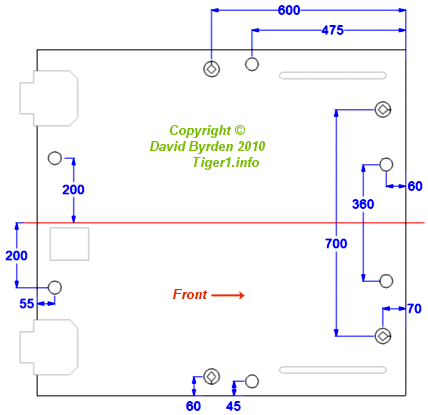
This simplified diagram shows the topside of the hatch. The positions of all the latches and locks are given. Note that there are no latches near the hinges.
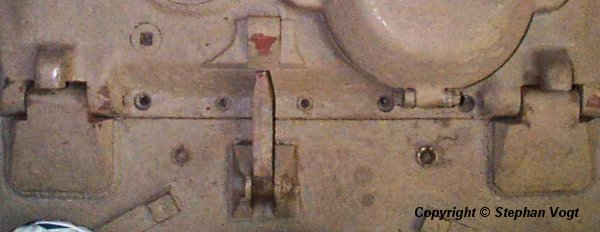
Indicated on the diagram, and shown in this photo, is a hook that can hold the door open. There were identical hooks on the grilles over the cooling fans, but their welded bases were smaller.
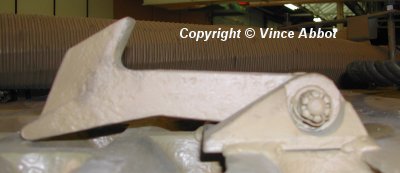
At some point between the 31st and 122nd Tiger hull, the original symmetric base of this hook was discontinued. Instead it was given the same base as the other two hooks, shown in this photo.
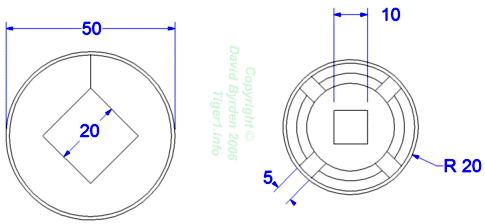
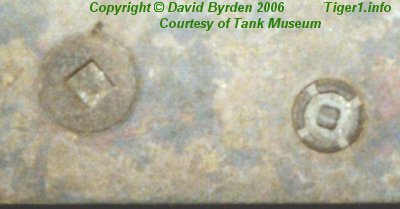
This diagram and photo show the fine details of the latches and locks as seen from outside. The latches required a square 20mm male wrench, and the sealing locks required a square 10mm female wrench.
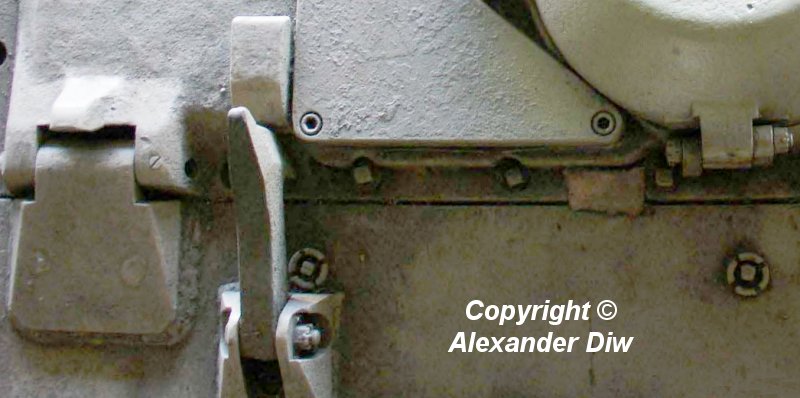
In March 1943, a triangular access panel was added to the decking behind the hatch [2] . The hook had to be moved. In its new position, the hook restricted access to one of the locks. This Tiger is in Kubinka museum [5] .
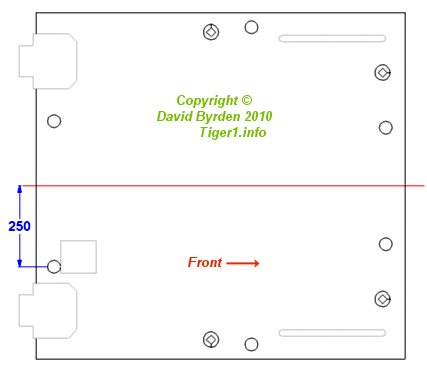
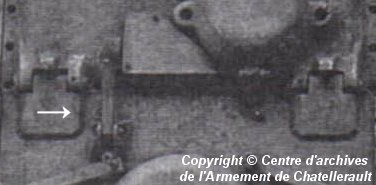
This problem was addressed by moving that lock to the position shown here. This detail from a wartime photo [4] shows a hull delivered in mid-June 1943 with the moved lock.
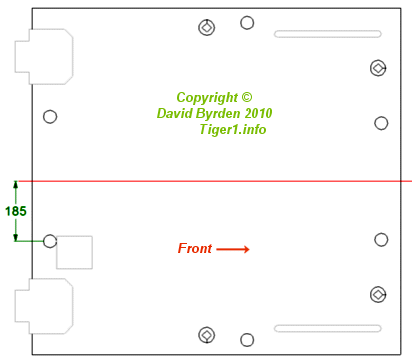
But a mistake had been made. The lock now fouled a pipe within the engine compartment (the hot water overflow pipe). It had to be moved again, to the position shown here.
There is a surviving German drawing that shows how to upgrade a Tiger's engine. At the edge of the diagram, a fix for this mistake was added at a later date. It explains the problem and states that the hole for the lock must be sealed up and the lock moved to a new position.
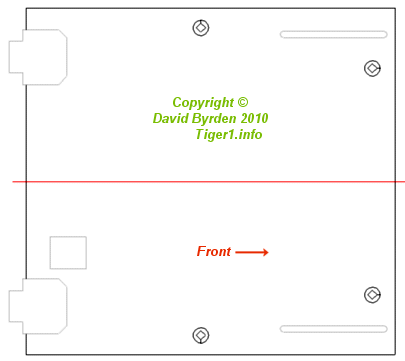
In September 1943, the underwater travel capability was dropped from the Tiger [2] . The 6 waterproofing locks were no longer installed in engine hatches. The latches remained, as this diagram shows.
In March 1944, the German drawing mentioned above was updated. It was probably at this time that somebody annotated the sketch, adding "if a lock is present".
[1] German sketch SK3426: engine upgrade
[2] Germany's Tiger Tanks, volume 1 : DW to Tiger 1
[3] Survey of Tiger 250122, at Bovington museum, by David Byrden
[4] German report on experimental ventilation gear for Tiger 1, now at Chatellerault archive
